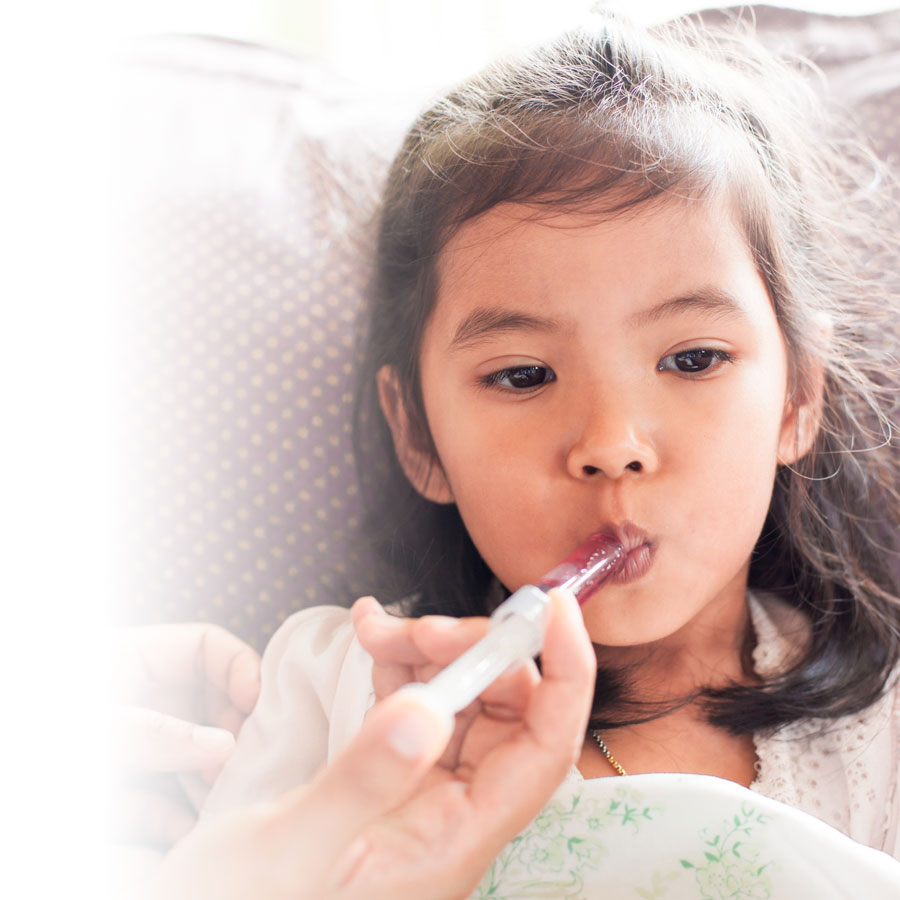When a child is ill, it’s no laughing matter! Medication can help, but it’s important to determine the optimal dose.
Medication use in children
Children are exposed to health problems from an early age. Colds, otitis, and gastroenteritis are illnesses that many parents are very familiar with, not to mention pain and fever that frequently develop and often make a child sullen or listless. When this occurs, relieving symptoms and helping a child get better, quickly becomes a priority.
The use of medication is sometimes necessary, but it is not always easy to determine if this is the case.
Consult your pharmacist
It is strongly recommended to consult your pharmacist at all times before purchasing medication for children. Pharmacists can:
- Evaluate whether your child really needs it.
- Calculate the optimal dose for your child and recommend the quantity needed.
- Suggest an alternative if the recommended medication is out of stock.
- Give you tips on administering the medication.
In the event of pain reliever shortages, it can be tempting to buy medication when it appears on the shelves. Here is a reminder of recommended best practices:
- Buy medications only if they are needed.
- Buy the amount of medication that is needed at the time (reasonable amount).
- Speak to your pharmacist if in doubt about an alternative product.
An online pain medication tool is available to help families and caregivers manage pain and fever in children.
What dose should be given?
Always determine and administer the correct dose likely to produce the desired effect safely. Because of their small stature, children are more likely than adults to accidentally receive too high a dose. Additionally, medication doses for children often vary from those for adults.
Pediatric doses are generally determined by the child's age or weight. Doses based on weight are usually more accurate, especially if the child is smaller or heavier than other children in the same age group. So, make sure you know your child's weight so you can tell your healthcare provider if needed. If you are using an over-the-counter medication and only the age-appropriate doses are listed on the package, ask your pharmacist for more information.

Avoid mistakes and reduce risks
To ensure the medications intended for children are safe, here are some tips.
- The dose of a medication is often prescribed in milligrams (mg). If you are given medication in liquid format, the pharmacist will convert this dose to millilitres (ml) based on the drug’s concentration. Follow your pharmacist’s instructions carefully in order to give your child the correct dose.
- Double-check the dose of the medication before each use. Don’t rely on your memory, which can play tricks on you!
- Use an age-appropriate measuring instrument (dosing cup or spoon, medicine dropper, or oral syringe). Do not use a kitchen spoon, as it is not accurate enough.
- Shake liquid preparations well before administering them, especially oral suspensions, as drug particles tend to settle at the bottom of the bottle. This ensures a consistent dose is taken with each use.
- Stick to the dosage. Even if your child seems very ill, do not change the dose or frequency of any medication. If you are concerned about your child’s condition, seek the help of a healthcare professional.
- Never give your child medication meant for someone else. The dosage may not be appropriate at all. Moreover, certain medications for adults should not be used in children.
- If a dose of the medication is forgotten, do not double the next dose. Ask your pharmacist what to do.
- If your child vomits shortly after taking the medication, speak to your pharmacist before administering another dose. Not all medications are absorbed at the same rate, the pharmacist will take this into consideration when providing you with the correct information.
- Keep your child's medication out of sight and out of reach, in its original packaging.
- Store medication at the appropriate temperature (in or out of the refrigerator, as required). Respect the expiration date printed on the label by your pharmacist.
A few tips to make taking medication easier
Giving medication to a child isn’t always easy. Here are a few tips to make things easier:
- Tell your pharmacist if your child has trouble swallowing tablets. A liquid formulation may be available. Speak to your pharmacist before cutting or crushing a tablet. The coating on the tablet may be necessary for its effectiveness. Additionally, some coatings help mask the medication’s unpleasant taste.
- Ask your pharmacist if it is possible to add a flavour to your child’s medication to improve the taste.
- Offer your child a popsicle or ice cube before taking the medication. The cold will "numb" their taste buds, making it easier to take the medication.
- Point the measuring instrument used to administer the liquid medicine to the inside of the cheek rather than directly on the tongue. This way, the liquid will flow between the gums and teeth and will be easier for your child to take.
- Speak to your pharmacist if the taste of the medication is still unbearable for your child. Another format (suppository, or chewable tablet) may be available and be a better option under the circumstances.
Speak to your pharmacist if you have any questions related to your child’s health.

